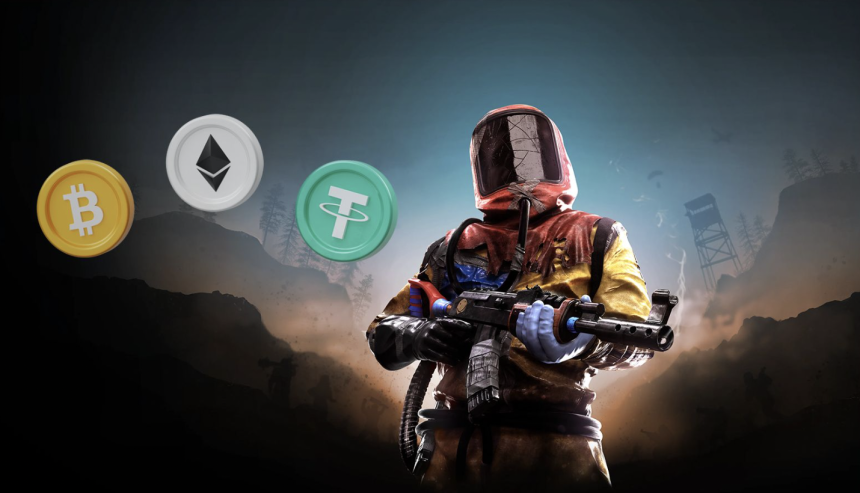Rust is a popular survival video game that has led to the creation of its virtual trading economy, where players can buy and sell items such as skins, weapons, and weapons customisation kits for real money.
If you happen to have some valuable equipment compiled in your Rust inventory and are ready to finally cash out on them, then scroll through this detailed guide that lists the most secure and profitable way for you to sell off your Rust inventory.
Understanding the Rust Market
It’s crucial to understand the rust economy before putting your items up for sale. In Rust, the economy items mostly consist of cosmetic skins that can be acquired in a multitude of different ways – in-game drops, purchases on Steam Marketplace, or directly from Facepunch during events. Even though these items don’t have any impact on the gameplay, these skins are considered valuable as they allow players to customize characters and environments as per their desires.
There are a number of factors that can influence the price of these items, with the highlights being the following rarity, aesthetics, functionality, and community trends.
Preparing Your Inventory for Sale
In order to sell your Rust items, you’ll need to head over to your Steam profile privacy settings, then set inventory visibility to “Public”. Enable the 15-day Steam Guard Mobile Authenticator Trade Hold. Finally, go to your Rust inventory and verify the prices at Steam Community Market or by using external pricing websites.
Choosing a Selling Platform
There are a number of options when it comes to selling your Rust items.
Steam Community Market
This is a marketplace that’s integrated with Steam itself. It’s safe and easy to use, but it allows you to receive funds in Steam Wallet, not as real-world currency you can use instantly.
3rd Party Marketplaces
Third-party rust trading sites like Skinport, DMaarket, or BitSkins allow you to sell items for real cash. While these platforms offer lower fees on Steam, they carry risks of scams. So, it’s crucial to be extremely cautious on these platforms.
Peer to Peer Trading
Gamers can trade directly with other players through peer-to-peer trading on Discord servers and game forums. This approach may produce higher prices but has increased downside risk.
Bulk Selling to Traders
Some individuals or businesses buy entire inventories at a discount, offering a quick but potentially less profitable option.
Steps by Step Guide to Sell Your Rust Inventory
Here’s a detailed process of selling your Rust in-game inventory broken into easy-to-follow steps.
- The first thing you want to do is choose a platform based on security, reputation, and availability.
- Create an account on the selected platform and link your Steam profile if needed.
- Price your items competitively and follow the provided instructions to list them as on the platform.
Remember to have patience because sometimes it takes a little longer for certain items to catch the right eye.
Everything Safe & Scam Free
Trading virtual items comes with risks and here are a few tips on how to protect yourself.
- Only pick safe and reliable platforms with buyer/seller protection.
- Runaway if it sounds too good to be true. Remember, the market is full of scams and you have to be on your toes all the time.
- Don’t share your Steam username and password.
- Make payments through secure payment gateways and never pay for any service out of the official channels.
- Beware of phishing scams. Always be sure to verify the domain of any trading sites, and constantly test all incoming links on online security services.
How to Maximize Your Profits
Here are a few tips on how to maximize the value of your Rust items.
- Prices fluctuate with updates, events, and market trends. Watch these indicators to cash out in the bull run.
- Bundle lower-priced skins with a few high-value items to increase the perceived value.
- If you are selling via peer-to-peer methods (like eBay), building a good reputation can result in more sales and better prices.
Cashing Out
Once your items start selling, the final step for you is to transfer these earnings directly into a bank of choice and enjoy real money. Each of the trading platforms offers different methods for withdrawals. The most popular and secure options include bank transfers, e-wallets like PayPal and Skrill, crypto currencies and gift cards. Don’t forget to count your withdrawal fees to determine your final price and profits.
Lynn Martelli is an editor at Readability. She received her MFA in Creative Writing from Antioch University and has worked as an editor for over 10 years. Lynn has edited a wide variety of books, including fiction, non-fiction, memoirs, and more. In her free time, Lynn enjoys reading, writing, and spending time with her family and friends.















